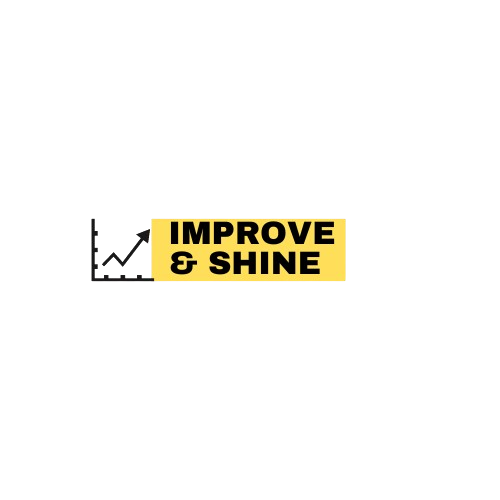Work goal examples. Remember when you set a personal goal, like running a marathon or learning something new? That moment was the start of something big. Setting clear work goals gives you direction and purpose. It’s not just a task; it’s a vision for your career.
Studies show that people with specific goals are 10 times more likely to succeed. Imagine using this power to boost your work success.

Understanding the importance of goal-setting opens up many work goal examples. These help you stay focused and productive. Every step you take brings you closer to your career dreams.
Table of Contents
Key Takeaways
- Goal-setting is essential for clarity and direction in your career.
- Specific goals significantly increase the likelihood of achieving success.
- Work goals enhance overall motivation and job satisfaction.
- Establishing clear objectives paves the way for professional development.
- Aligning personal and organizational goals maximizes effectiveness.
Understanding the Importance of Setting Work Goals
Setting work goals is key to improving performance and job happiness. Clear goals help employees stay focused and motivated. They guide workers in what they need to do to reach their goals.
Benefits of Work Goals
Work goals offer many advantages:
- Direction: Goals show employees the right path.
- Focus: Focusing on goals boosts productivity.
- Accountability: Goals make employees take responsibility for their work.
Research shows that employees with clear goals are more engaged and happy at work. This leads to better performance.
How Goals Drive Performance
Reaching career goals depends on clear objectives. When employees know their targets, they can focus better. This leads to more productivity and motivation.
Companies see big benefits when employees set and meet their goals. These employees help the whole team succeed.
Aligning Personal and Company Objectives
For a company to do well, goals must align. This ensures personal goals help the business grow. At places like Google and Microsoft, employees feel more fulfilled when their goals match the company’s.
Types of Work Goals You Can Set
Setting clear goals is key for personal growth and team success. Knowing the different types of work goals helps employees focus better. This section looks at short-term and long-term goals, SMART criteria, and individual versus team goals. Using these strategies makes achieving success more structured.
Short-term vs. Long-term Goals
Short-term goals last from weeks to months, giving employees quick targets. They might include finishing a project or improving skills. Long-term goals, lasting years, are about career dreams, like getting promoted or earning new qualifications. Both are vital, as short-term wins pave the way for long-term success.
SMART Goals Explained
The SMART framework is a top choice for setting goals. It makes sure goals are Specific, Measurable, Achievable, Relevant, and Time-bound. For instance, Amazon uses SMART goals to increase productivity. This method brings clarity, makes tracking progress easier, and boosts team performance.
Individual vs. Team Goals
Individual goals help employees grow and achieve, focusing on their strengths and weaknesses. Team goals, on the other hand, promote teamwork and shared goals. It’s important for companies to balance both to encourage growth and teamwork. SMART goals help in achieving both personal and team success.
Examples of Performance Goals for Employees
Clear performance goals help employees focus and measure their success. Here are some examples of work goals that boost productivity and effectiveness in a company.
Meeting Sales Targets
Meeting sales goals is a key performance target. For instance, aiming to increase monthly sales by 10% is common. This goal encourages employees to find new ways to reach customers and increase sales.
Workshops on understanding customer needs can also help meet these targets.
Improving Customer Satisfaction
Keeping customers happy is essential for long-term success. Setting a goal to get at least a 90% customer feedback score is a good target. This goal motivates employees to improve their service quality.
Training in communication and problem-solving helps staff better serve customers. This leads to higher satisfaction rates.
Enhancing Productivity Levels
Reducing time on repetitive tasks boosts productivity. Employees might aim to save 15% of time on admin tasks. Using automation software can make tasks more efficient.
Setting Development Goals for Career Growth
To grow in your career, you need to set goals that match your dreams. These goals are like a map to improve your skills and get ready for new challenges. By focusing on learning new things and making connections, you can open doors to bigger opportunities.
Upskilling and Reskilling Opportunities
Today’s job market changes fast, so learning never stops. Upskilling means getting better at what you already do, while reskilling is about learning something new. Look for courses, workshops, and online training to keep up with what’s needed in your field.
Networking and Relationship Building
Having a strong network can really help you move up in your career. Go to industry events, join groups, and use LinkedIn to meet important people. These connections can lead to mentorship and new job chances, helping you grow both personally and professionally.
Pursuing Certifications and Training
Certifications can make you more credible and attractive to employers. Fields like IT, healthcare, and project management have many certifications that prove your skills. Getting trained can lead to better jobs and more chances for advancement in a competitive world.
| Development Goals | Actions Required | Expected Outcomes |
|---|---|---|
| Upskilling | Enroll in online courses | Improved skill set |
| Reskilling | Participate in workshops | New career opportunities |
| Networking | Attend industry events | Expanded professional connections |
| Certification | Complete training programs | Enhanced job prospects |
Examples of Team Collaboration Goals
Good teamwork makes work better and happier. Setting goals for teamwork helps create a place where everyone talks and trusts each other. Here are some key areas to think about when setting teamwork goals.
Enhancing Communication Within Teams
Regular updates and meetings make teams clear about what’s happening. Having places for open talk lets everyone share ideas. For example, having weekly meetings to talk about progress and problems is a good goal. It helps everyone stay on the same page and avoids mistakes.
Increasing Project Turnaround Speed
Clear goals and deadlines make projects finish faster. Breaking tasks into smaller parts helps teams work together better. Keeping everyone up to date on what needs to be done helps projects get done quickly. A goal could be to finish projects faster by a certain amount in a quarter.
Building Trust and Accountability
Trust and being responsible are key for teamwork. Doing team activities helps everyone feel connected and valued. Sharing tasks builds a team that supports and relies on each other. A goal could be to start a system where team members review and support each other’s work.
| Collaboration Goal | Example Activities | Expected Outcomes |
|---|---|---|
| Enhancing Communication | Weekly team meetings | Increased transparency, higher morale |
| Increasing Project Speed | Defining timelines and milestones | Faster project completion |
| Building Trust | Team-building exercises | Stronger bonds and accountability |
Examples of Goals for Remote Work Success
Remote work is now common in today’s world. Setting clear goals is key to being productive and happy while working from home. Here are some great work goal ideas for remote success.
Maintaining Work-life Balance
It’s important to keep work and personal life separate. Make a schedule with dedicated work hours and time for family and hobbies. Use time management skills to enjoy your free time without work interrupting.
Utilizing Technology Effectively
Use tools made for remote work. Tools like Slack, Zoom, and Trello can make communication and project management easier. Aim to get good at these tools to work more efficiently and reach your career goals.
Regular Check-ins and Feedback Loops
Make sure to have regular team meetings. These meetings help the team work together and stay on track with goals. Feedback loops also help improve and keep everyone focused on their goals.
| Goal Type | Work-Life Balance | Technology Utilization | Team Communication |
|---|---|---|---|
| Objective | Maintain a healthy separation of work and personal life | Become proficient with essential remote tools | Enhance team collaboration and feedback |
| Strategy | Set clear working hours and personal time | Choose and learn to use 2-3 key platforms | Implement weekly or bi-weekly check-ins |
| Metrics for Success | Satisfaction levels in personal time | Time spent using tools effectively | Participation rates in check-ins |
How to Measure and Track Your Goals
Measuring and tracking work goals is key to success. Good goal setting means setting clear metrics and timelines. This helps teams know what they need to do and when.
Using Key Performance Indicators (KPIs) gives teams data on how they’re doing. This lets them check their progress often.
Setting Key Performance Indicators (KPIs)
KPIs are the base of measurable goals. They should be specific and match both short and long-term goals. This way, teams can see how they’re doing overall.
Knowing what to focus on helps teams stay on track. It’s important to make KPIs clear and achievable, using the SMART criteria.
Regular Review and Adjustment Cycles
Regular reviews keep teams focused on their goals. They help spot what’s working and what’s not. This lets teams make the needed changes.
This cycle of feedback builds a culture of responsibility. It also helps team members work better together.
Tools for Tracking Progress
Many tools help track work goals. Asana, Monday.com, and Google Analytics are great for this. They fit into daily work, keeping teams organized and up-to-date.
Companies like HubSpot see better team performance with these tools. Using technology wisely can really boost productivity. For more on goal setting, check out this resource.
Addressing Common Challenges in Goal-Setting
Setting work goals can feel overwhelming. Many challenges come up during this process. It’s key to know these obstacles to reach your career goals.
Three big challenges are beating procrastination, managing what others expect, and handling many goals at once.
Overcoming Procrastination
Procrastination is a big problem in goal-setting. To fight it, make plans with clear deadlines. Break big tasks into smaller steps to feel accomplished and stay motivated.
Try the Pomodoro technique to stay focused and meet deadlines.
Managing Expectations
It’s important to set goals that are realistic and reachable. Know your limits and celebrate small wins. This keeps your goals in check.
Reflect on your goals often. This helps adjust them as needed, making success more likely.
Balancing Multiple Goals
Many people find it hard to juggle different priorities. Sort tasks by importance and urgency. This makes choosing what to do easier.
When you can, pass tasks to others. This spreads out the work and keeps you focused on your goals.
| Challenge | Solution |
|---|---|
| Overcoming Procrastination | Create structured plans with deadlines |
| Managing Expectations | Set realistic, attainable goals |
| Balancing Multiple Goals | Prioritize tasks and delegate effectively |
Tips for Staying Motivated Toward Achieving Goals
Keeping motivated is key when you’re working on professional goals. There are many ways to stay focused and keep your energy up. Here are some tips to help you stay motivated and reach your goals.
Creating a Vision Board
A vision board is a visual reminder of your dreams. It’s filled with images, quotes, and phrases that inspire you. Having it somewhere you can see it keeps your goals in mind every day.
Celebrating Small Wins
It’s important to celebrate every small success. Whether it’s finishing a tough task or hitting a milestone, take time to celebrate. This helps you feel accomplished and keeps you motivated to keep going.
Finding an Accountability Partner
Having someone to hold you accountable can really help. This person supports and gives feedback. Share your goals with them and check in regularly to talk about your progress. This partnership helps you stay committed to your goals.

| Strategy | Description | Benefits |
|---|---|---|
| Vision Board | A creative collage of images and words reflecting your goals. | Visual motivation and constant reminders of aspirations. |
| Small Wins | Acknowledging accomplishments, no matter how minor. | Boosts morale and encourages continued progress. |
| Accountability Partner | A collaborative relationship focused on mutual goal achievement. | Regular support and motivation to stay on track. |
Real-life Success Stories of Achieved Work Goals
Real-life success stories show us how to reach work goals. Adobe’s focus on specific metrics boosted team productivity. This example shows how dedicated goal pursuit can lead to big wins and career growth.
Case Studies of Goal-setting Success
Looking at different companies, we see how goal-setting drives careers. Salesforce’s SMART goals improved teamwork and growth. These stories highlight the power of clear, achievable goals.
Lessons Learned from Reaching Objectives
Success teaches us valuable lessons, like the need for resilience. Leaders who reached their goals show us the importance of staying flexible. Persistence and adaptability are key to overcoming hurdles.
Inspirational Quotes from Industry Leaders
Leaders like Sheryl Sandberg and Simon Sinek stress the value of passion and goal commitment. Their quotes motivate us to pursue our career dreams. Remember, the journey may be tough, but the rewards are worth it.
FAQ
What are some examples of goals for work?
Work goals can be like improving sales by 10% or boosting customer satisfaction. You might also aim to finish a project on time. Professional growth goals, like training or new certifications, are also good ideas.
How can I set effective goals for my career advancement?
For career goals, make them SMART: Specific, Measurable, Achievable, Relevant, and Time-bound. For example, aim to learn a new skill by taking a course within three months.
What performance targets should I consider for my job?
Good performance targets include sales numbers, customer satisfaction, or project deadlines. These help you see how you’re doing and if you’re meeting company goals.
What are SMART goals, and why are they important?
SMART goals are clear and doable. They help you set focused goals, making success more likely than vague targets.
How can I align my personal goals with my company’s objectives?
First, learn what your company values and aims for. Then, set work goals that help achieve these. Talk to your manager to make sure your goals match theirs.
What strategies can I use to stay motivated toward achieving my goals?
To stay motivated, try making a vision board or celebrating small wins. Having someone to hold you accountable also helps keep you focused on your goals.
What tools can assist me in tracking my goals?
Tools like Asana, Trello, or Monday.com are great for tracking your goals. They let you set deadlines, assign tasks, and see your progress, keeping you on track.
How do I measure my progress on work-related goals?
Use Key Performance Indicators (KPIs) that match your goals. Regularly check these KPIs to see how you’re doing and adjust your plan as needed.
How can I overcome procrastination in goal-setting?
Beat procrastination by making a plan with deadlines and breaking tasks into smaller steps. Staying disciplined helps you stay productive and reach your goals.
What common challenges might I face when setting goals?
You might struggle with managing expectations, juggling multiple goals, or procrastination. Knowing these challenges helps you find better ways to set and achieve your goals.
Want to know how to achieve Goals, check the following article:

